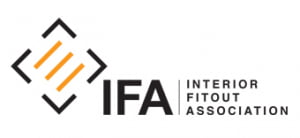Victoria introduces ban on dry cutting engineered stone
On August 20, 2019, a ban on the uncontrolled dry cutting of engineered stone came into effect across Victoria to help protect workers from exposure to deadly silica dust.
Workplace health and safety regulations now prohibit the cutting, grinding and abrasive polishing of engineered stone with power tools, unless on-tool water suppression or dust extraction devices are in place and respiratory protection equipment is used.
If it is not reasonably practicable to use water suppression or dust extraction, local exhaust ventilation must be used.
What is considered engineered stone?
In Victoria, the amended regulations define engineered stone as a manufactured composite stone that contains resins and has a crystalline silica content of at least 80 per cent.
To find out how much crystalline silica is in a product check the safety data sheet or other information from the supplier.
What does the ban mean?
Under the amended regulations, an employer, self-employed person or person who manages or controls a workplace must ensure a power tool is not used to cut, grind or abrasively polish engineered stone, unless the tool:
- has an integrated water delivery system that supplies a continuous feed of water (on-tool water suppression), or
- is fitted with on-tool extraction attached to a HEPA filtered dust class H vacuum cleaner (or similar system that captures the dust generated).
If these controls are not reasonably practicable, the use of power tools must be controlled through local exhaust ventilation (LEV).
It also means that people cutting, grinding or polishing engineered stone with a power tool must be provided with respiratory protective equipment that:
- is designed to protect the wearer from the inhalation of airborne contaminants entering the nose, mouth and lungs
- complies with AS/NZS 1716 – Respiratory protective devices.
All controls must be properly designed, installed, used and maintained so they stay effective at reducing exposure to crystalline silica dust.
Who is responsible for making sure the controls are in place and the required equipment is supplied?
- Employers.
- Self-employed people.
- People who manage or control a workplace.
Is using a handheld hose (or other handheld water delivery device) to direct water at the cutting point considered to be an ‘integrated water delivery system’?
No, an integrated water delivery system is interlocked with the power tool to ensure water is continuously delivered to the cutting point whenever the tool is in operation.
Instead of a commercially available on tool extraction system connected to a Dust Class H Vacuum can I use another extraction system?
Yes, as long as the alternative system effectively captures the dust at the source where it is generated and collects it in a manner that does not expose anyone to any dust.
Do I need to provide every person who uses a power tool to cut, grind or abrasively polish engineered stone with respiratory protective equipment (RPE) in addition to a water delivery system, on-tool extraction or local exhaust ventilation?
Yes, it is mandatory to provide RPE to anyone who is cutting, grinding or abrasively polishing engineered stone with a power tool.
You also need to provide them with training on selecting, using and maintaining the RPE.
What level of RPE do I need to provide?
RPE provided must:
- be designed to protect the wearer from the inhalation of airborne contaminants entering the nose, mouth and lungs, and
- comply with AS/NZS 1716 – Respiratory protective devices.
Check the product information to make sure RPE is AS/ NZS 1716 compliant. If you’re not sure, ask your supplier or contact the manufacturer.
RPE needs to have at least a P2 filter and be tested to ensure correct facial fit for each person. Where facial hair interferes with the fit of the respirator, a powered respirator that does not rely on a facial seal must be used.
RPE needs to be selected, used and maintained in accordance with AS/NZS 1715 – Selection, use and maintenance of respiratory protective equipment. Employers must give employees information, instruction and training on how to use and maintain RPE.
Note: Respiratory protection is not mandated when fully automated cutting, grinding or polishing systems are used, as long as employee exposure levels are below the exposure standard. If there is any uncertainty about whether the exposure standard is, or may be exceeded, atmospheric (personal) monitoring of employees must be completed.
Who do the new regulations apply to?
Employers, those who are self-employed and people who manage or control a workplace must ensure that they are complying with the new requirements.
Employees also need to be aware of these changes – they have a legal obligation to cooperate with their employer’s efforts to comply with the ban.
Do the amendments change existing OHS Regulations requirements for crystalline silica?
The new requirements prescribe controls that must be used when a person is cutting, grinding or polishing engineered stone with a power tool. This applies in addition to existing requirements under Part 4.1 (Hazardous substances) of the OHS Regulations.
In other words, duty holders must work through both the hierarchy of controls specified in Part 4.1 of the OHS Regulations and implement the controls specified in the amended regulations.
Air monitoring
Employers also continue to have an obligation to carry out air monitoring if:
- they are not sure if their employees are exposed to levels of silica dust that are above the exposure standard, or
- they can’t work out if there’s a risk to employee health without air monitoring.
Employers should carry out regular air monitoring to ensure employee exposure is controlled.
Health monitoring
Employers must provide health monitoring if exposure to crystalline silica is likely to affect their employees’ health. Employers should carry out health monitoring in all stone benchtop fabrication workplaces, unless air monitoring data shows that exposure is less than 0.02 mg/m3 as a time-weighted average (TWA) airborne concentration over 8 hours.
How do I make sure that I am complying with the new requirements?
If anyone at your workplace uses power tools to cut, grind or abrasively polish engineered stone, you should review your controls to ensure you are compliant with the new requirements as specified in this document, and revise them if necessary.
What happens if I do not comply with the new requirements?
There are consequences for duty holders who don’t control risks of dry processing.
If WorkSafe inspectors observe cutting, polishing or grinding without the required controls in place, they will issue enforcement notices or take other action. Failing to control risks of dry processing may be a criminal offence.
What requirements apply for other materials that contain crystalline silica?
Employers must control the risks of their employees’ exposure to crystalline silica dust. When determining what control measures to use, employers must apply the hierarchy of control. Employers must first determine if the risk of exposure to crystalline silica dust can be eliminated.
Where the risk of exposure can’t be eliminated, it must be reduced as far as is reasonably practicable, using one or more of these controls:
- Substitution (for example substituting high silica content products with others that have a lower silica content)
- Isolation
- Engineering controls
If the risk of exposure still remains, administrative controls must be used to reduce the risk so far as is reasonably practicable. If a risk still remains, personal protective equipment must be used.
Employers also have an obligation to undertake air monitoring and provide health monitoring to employees in certain circumstances.
*Queensland introduced similar bans in 2018. While some other states may be yet to follow, it is in the best interests of you and your workers to adopt these changes immediately if you work with engineered stone.
As always, please check with your relevant state regulator for more information.


Leave a Reply
Want to join the discussion?Feel free to contribute!